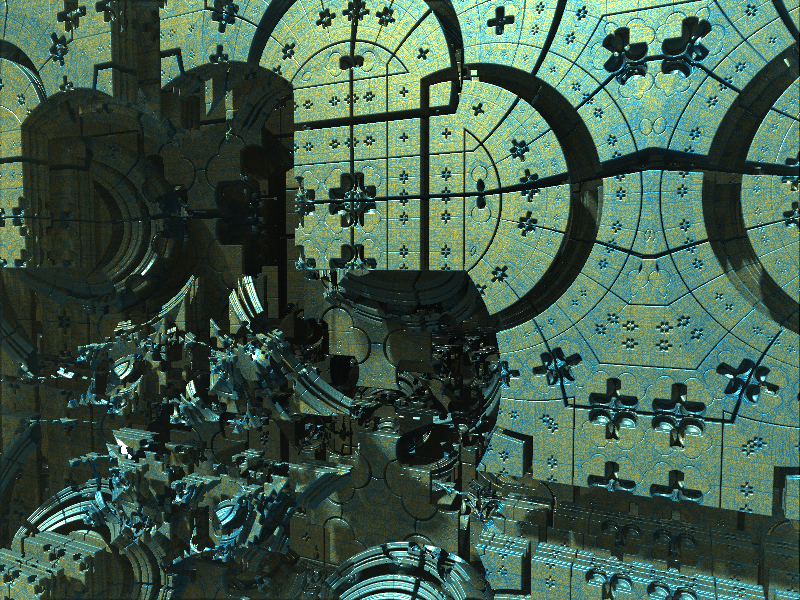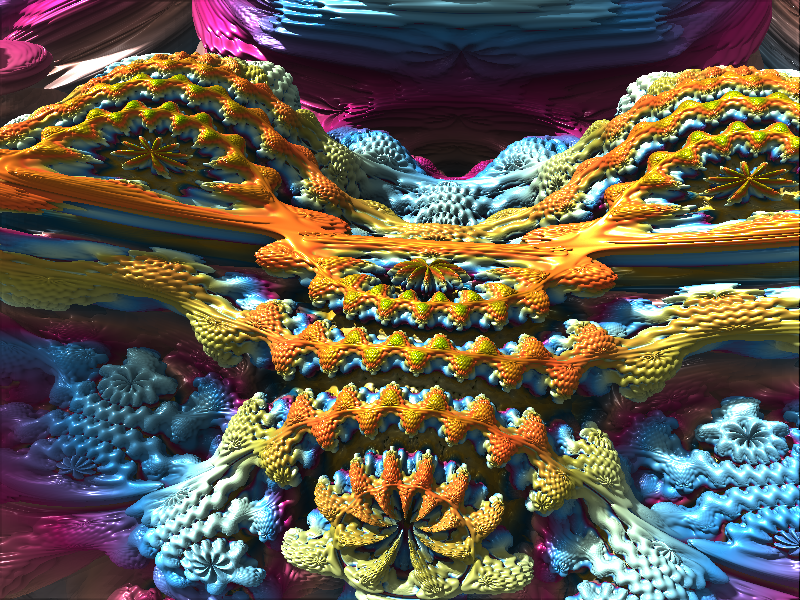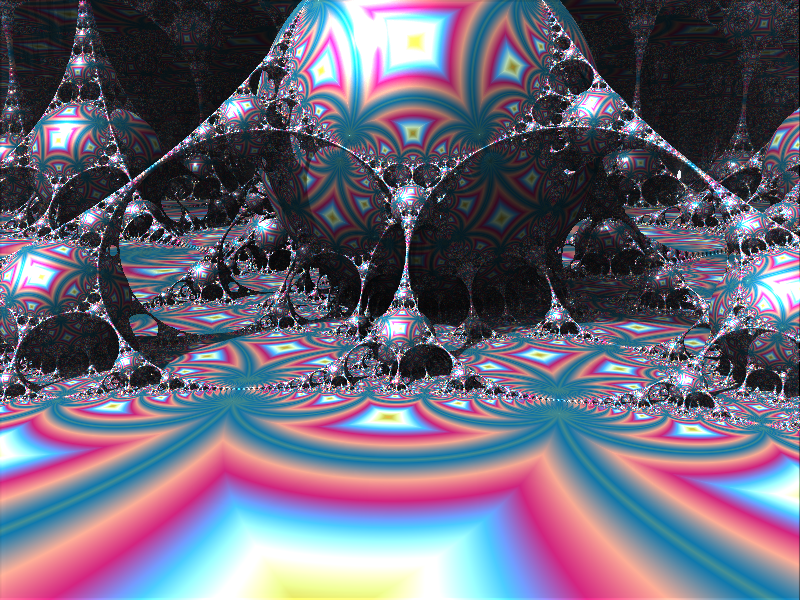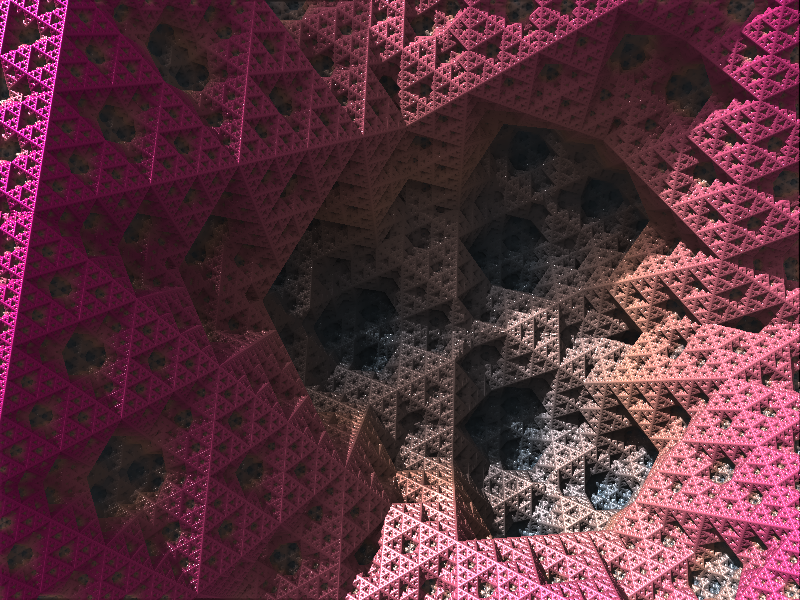Fractals are really cool. As a kid, I always loved them for some odd reason. I used to draw Sierpinski triangles on the side of my math homework, watched Mandelbrot set videos in Grade 7, even listened to Fractal Dreamers before I stopped for theological reasons. Recently, I learned how to create and generate my own cool 3-dimensional fractals using a software called Mandelbulber. These were my first attempts, which don't have the greatest resolution or quality, but I still think they're quite beautiful by virtue of their infinite nature.

Some kind of cube thing. I forgot what parameters I used to initialize it.
About Fractals
Fractals are usually defined as self-similar infinitely recursive geometrical structures. Unfortunately, I don't actually know enough math to properly do the subject justice. Every fractal that I know of is either generated through a recursive function or a naturally occurring chaotic structure. Fractals usually have infinite perimeter unless they approach some value. Fun fact, the coastline of Britain is a well-known fractal problem. Please read more about fractals elsewhere, I'm not very good at explaining them, I just think they look pretty.

A poorly rendered Menger sponge, also called a Sierpinski sponge. It's a little grainy, since my PC didn't want to render any more of it.

A Mandelbox with a scale of -2. It actually contains approximations of other fractals inside of it, a property shared by the 2-dimensional Mandelbrot set. I'm calling this one a Fractal Swiss Cheese due to its similarity.

A close-up of a Mandelbulb generated with a power of 9. Basically a 3-dimensional version of the Mandelbrot set. The colors are so beautiful.

I don't even know what this is. It's called a "Pseudo-Kleinian" model, apparently. It reminds me of those old surreal memes with Stonks Man and Orang. Also kind of looks like something that might be in the background of a vaporwave album cover.

The classic Sierpinski triange, created in 3D but also as an icosahedron. It reminds me of an amethyst geode.
What did I use to make this?
I did this all on my beautiful potato called the ThinkPad T480. It has an i7-8650U processor, 32GB of RAM (wasn't particularly consequential in this program), and integrated graphics. (I use Arch, btw.) The software I used was Mandelbulber, which could probably run on PCs that are more potato-ey than mine. It's pretty easy, actually.
What next?
I might try making more with different materials, different functions, and more detailed images. For now, this is just a cool
novelty with not much purpose whatsoever, but it's a very cool art project that I quite like a lot. If you enjoyed looking at these,
I recommend trying to generate some yourself!
Art is beautiful, and math is art.